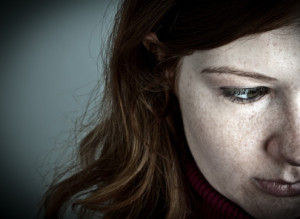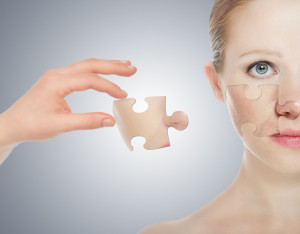- Calls to this hotline are currently being directed to Within Health, Fay or Eating Disorder Solutions
- Representatives are standing by 24/7 to help answer your questions
- All calls are confidential and HIPAA compliant
- There is no obligation or cost to call
- Eating Disorder Hope does not receive any commissions or fees dependent upon which provider you select
- Additional treatment providers are located on our directory or samhsa.gov
The Connection Between Body Image and Eating Disorders
Contributed by: Neathery Thurmond, LMSW, Staff Therapist at Hill Country Recovery Center in Austin, TX
 Eating disorders are complex illnesses that are not only complex in treatment; they are also complex in understanding their cause. At this time there is no direct link in what causes an eating disorder. If only it were as simple as a + b = eating disorder.
Eating disorders are complex illnesses that are not only complex in treatment; they are also complex in understanding their cause. At this time there is no direct link in what causes an eating disorder. If only it were as simple as a + b = eating disorder.
Though we do not have direct links, we have what are known as risk factors. One of the leading frameworks to understanding the development of any maladaptive coping skill (eating disorders included) is the biosocial theory.
The Biosocial Theory
The biosocial theory brings to light the effect that an invalidating environment has on individuals who are biologically predisposed to a highly sensitive nervous system (Crowell, Beauchaine, & Linehan, 2009).
A highly sensitive person copes with feelings of not belonging, of not fitting in, and low levels of self-esteem by using eating disorders, substance abuse, self-harm, etc. For a highly sensitive person, an invalidating environment can be anything from a parent’s divorce, trauma, or simply living in our diet-obsessed society.
Body Image as a Sociocultural Risk Factor
 Body image plays a critical role in the development and maintenance of an eating disorder. In fact, it has been researched that having positive body image is a protective factor in that it reduces the vulnerability for an individual to develop an eating disorder (Reel, 2013). In understanding the impact of body image on eating disorders, it is important to understand the four aspects of body image (National Eating Disorders Collaboration, 2015):
Body image plays a critical role in the development and maintenance of an eating disorder. In fact, it has been researched that having positive body image is a protective factor in that it reduces the vulnerability for an individual to develop an eating disorder (Reel, 2013). In understanding the impact of body image on eating disorders, it is important to understand the four aspects of body image (National Eating Disorders Collaboration, 2015):
- Perceptual body image: how an individual sees their body (not usually a correct representation). A person might perceive themselves as being larger than they actually are. Depending on the severity, this is also known as body dysmorphic disorder.
- Affective body image: how an individual feels towards their body and relates to body satisfaction or dissatisfaction.
- Cognitive body image: Preoccupation with weight and body shape. An individual might hold beliefs about themselves that depend on whether they are thinner or more muscular.
- Behavioral body image: Behaviors used as a result of body image (disordered eating, isolation, overexercise, etc.)
While an individual might be born with a genetic makeup to be more emotionally sensitive and perfectionistic, poor body image is not an inherent trait. The old saying of biology loads the gun and environment pulls the trigger applies not just to eating disorders but also to body image.
The Impact of Dieting and the Media
Dieting and poor body image are the leading precipitating factors into the development of an eating disorder (Tyrka, Waldron, Graber, & Brooks-Gunn, 2002). The media’s focus and obsession with body size and appearance is contagious. A landmark research study identified just how contagious the media’s influence can be towards body image and eating behaviors.
Western television programming was brought to Fiji and after this media exposure researchers were able to track an increase in shape and weight preoccupations, purging behavior to control weight, and increased poor body image (Becker, 2004).
Dealing with Unattainable Ideals
 In a world where everything is Photoshopped, it is detrimental to impose such unattainable body ideals. This can create a never ending quest for the “perfect body” when there truly is no such thing. Additionally, diets fail 95-98% of the time so advertisers are selling something that does not work to attain a body type that does not exist (Hogan & Strasburger, 2008).
In a world where everything is Photoshopped, it is detrimental to impose such unattainable body ideals. This can create a never ending quest for the “perfect body” when there truly is no such thing. Additionally, diets fail 95-98% of the time so advertisers are selling something that does not work to attain a body type that does not exist (Hogan & Strasburger, 2008).
The “perfect body” ideal varies from culture to culture and is experienced differently in males than females and also is experienced differently in different age groups.
It is important to note that not everyone who is exposed to the media develops an eating disorder. This is where the biological vulnerability of an individual places them at risk for an eating disorder when exposed to this environmental stimulus.
The Cycle of Poor Body Image
An individual first experiences an event, which often times can be completely neutral (i.e. shopping, reading a magazine, or going to a social outing). This person then typically engages in negative self-talk and tells themselves how terrible they look or that they need to be a certain size or until they look a particular way that they are unlovable.
This thought influences their behavior and they engage in unhealthy behaviors to try and control their weight or appearance. Ultimately this impacts their emotions and typically feelings of shame and guilt arise which continue to perpetuate negative self-talk. Thus, the cycle continues.
Current Trends in Research
 Effects of social media use are now being studied to show a connection to poor body image and ultimately the development of eating disorders.
Effects of social media use are now being studied to show a connection to poor body image and ultimately the development of eating disorders.
While the notion of the media portraying unrealistic body types is becoming more widely known, social media use can impact body image by the individual comparing to other peers and even to previous photos of themselves (Mabe, Forny, & Keel, 2014).
There is Hope
As mentioned previously, positive body image is a protective factor against the development of eating disorders. By implementing prevention programs that are empirically shown to improve body image, there is hope that the number of individuals suffering from eating disorders can diminish.
Community Discussion – Share your thoughts here!
In your eating disorder recovery, what path has led you to an improved body image? What boundaries have you set in place to protect your improved body image?
References:
- Becker A.E. (2004). Television, disordered eating, and young women in Fiji: negotiating body image and identity during rapid social change. Cult Med Psychiatry. 28(4):533-559.
- Crowell, S.E., Beauchaine, T.P., and Linehan, M.M. (2009). A biosocial developmental model of borderline personality: Elaborating and extending linehan’s theory. Accessed at: http://www.ncbi.nlm.nih.gov/pmc/articles/PMC2696274/
- Hogan, M.J. & Strasburger, V.C. (2008). Body image, eating disorders, and the media. Adolesc Med State Art Rev. 19(3):521-46, x-xi.
- Mabe, A. G., Forney, K. J. and Keel, P. K. (2014), Do you “like” my photo? Facebook use maintains eating disorder risk. Int. J. Eat. Disord., 47: 516–523. doi: 10.1002/eat.22254
- National Eating Disorders Collaboration. (2015). Body Image Fact Sheet.
- Reel, J.J. (2013) Eating disorders: An encyclopedia of causes, treatment, and prevention.
ABC-CLIO: Santa Barbara, CA. - Tyrka AR, Waldron I, Graber JA, Brooks-Gunn J. (2002). Prospective predictors of the onset of anorexic and bulimic syndromes. Int J Eat Disord. 32(3):282-290.
The opinions and views of our guest contributors are shared to provide a broad perspective of eating disorders. These are not necessarily the views of Eating Disorder Hope, but an effort to offer discussion of various issues by different concerned individuals.
Last Updated & Reviewed By: Jacquelyn Ekern, MS, LPC on July 22nd, 2015
Published on EatingDisorderHope.com

